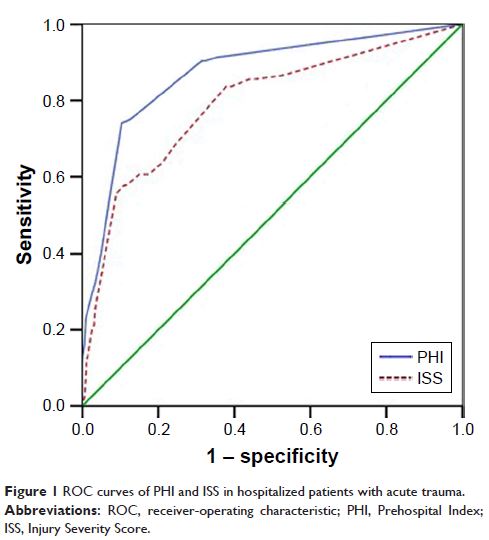108985
论文已发表
注册即可获取德孚的最新动态
IF 收录期刊
- 3.4 Breast Cancer (Dove Med Press)
- 3.2 Clin Epidemiol
- 2.6 Cancer Manag Res
- 2.9 Infect Drug Resist
- 3.7 Clin Interv Aging
- 5.1 Drug Des Dev Ther
- 3.1 Int J Chronic Obstr
- 6.6 Int J Nanomed
- 2.6 Int J Women's Health
- 2.9 Neuropsych Dis Treat
- 2.8 OncoTargets Ther
- 2.0 Patient Prefer Adher
- 2.2 Ther Clin Risk Manag
- 2.5 J Pain Res
- 3.0 Diabet Metab Synd Ob
- 3.2 Psychol Res Behav Ma
- 3.4 Nat Sci Sleep
- 1.8 Pharmgenomics Pers Med
- 2.0 Risk Manag Healthc Policy
- 4.1 J Inflamm Res
- 2.0 Int J Gen Med
- 3.4 J Hepatocell Carcinoma
- 3.0 J Asthma Allergy
- 2.2 Clin Cosmet Investig Dermatol
- 2.4 J Multidiscip Healthc

入院前指数为住院急性创伤患者提供预后指标
Authors Ruan H, Ge W, Chen J, Zhu Y, Huang W
Received 20 October 2017
Accepted for publication 24 February 2018
Published 13 April 2018 Volume 2018:12 Pages 561—565
DOI https://doi.org/10.2147/PPA.S154670
Checked for plagiarism Yes
Review by Single-blind
Peer reviewers approved by Dr Colin Mak
Peer reviewer comments 2
Editor who approved publication: Dr Naifeng Liu
Objective: To evaluate the prognostic
value of the Prehospital Index (PHI) for hospitalized patients with acute
trauma.
Materials and methods: PHI score and the Injury Severity Score (ISS) were
determined in 1,802 hospitalized patients with acute trauma. Receiver-operator
characteristic (ROC) curves were used to compare the PHI and ISS in subgroups,
and corresponding prediction indicators were calculated.
Results: There were significant differences in PHI score
and ISS between the survival group and the death group (Z =2.674, P =0.007). The area under the ROC
curve was 0.871 (95% CI 0.855–0.886) for PHI score and 0.792 (95% CI
0.773–0.811) for ISS. Optimal cutoff points to determine the risk of critical
illness were PHI ≥4 and ISS ≥22. The sensitivity of the PHI was superior to the
ISS (χ 2=6.975, P =0.008), but the specificity and
the accuracy of the PHI and ISS showed no significant difference (P >0.05).
Conclusion: The PHI is valuable in prognostic prediction of
hospitalized patients with acute trauma, and it is superior to the ISS. The PHI
has such advantages as being simple in operation, easy to learn, capable of
reflecting conditions timely and reliably, and suitable for dynamic evaluation
and screening for critical patients with trauma.
Keywords: Prehospital
Index, trauma, hospitalized patient, Injury Severity Score
